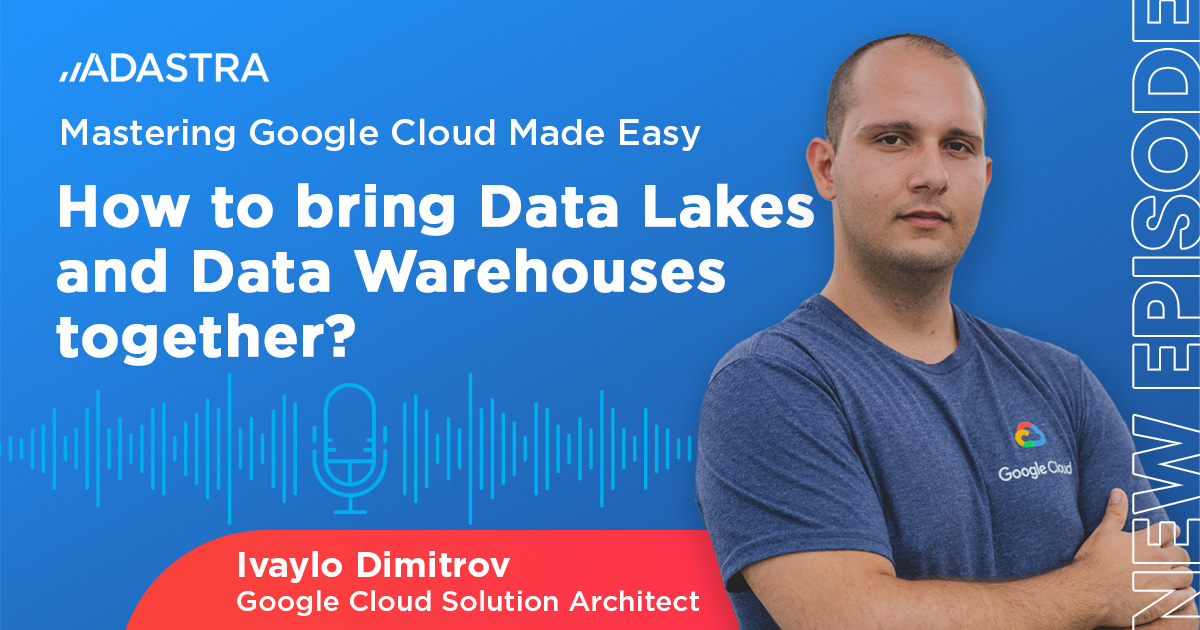Insights
Leveraging AI and ML to Solve Complex Data Problems
July 7, 2022
I’m here today with Katya Dunets, the Data Science Practice Lead at Zelusit. Katya and her team work to uncover insights from big, structured, and unstructured data as well as perform advanced and predictive analytics to help organizations derive value.
Today she is here to share some insight with us on artificial intelligence and machine learning, and their role in solving complex business problems.
Welcome, Katya. Can you start by telling us a bit about AI and ML?
Artificial intelligence is essentially a wide branch of computer science that deals with building machines or systems that can simulate human intelligence or perform human-like tasks, as well as improve their outputs over time based on new data.
Machine learning is a subset or an application of AI that allows machines to automatically learn from historical data to make future decisions or predictions through various algorithms. The idea is that given enough data for a particular problem, machines should be able to learn independently, with minimal human input.
So how are businesses using AI today? How is it transforming the way they operate?
AI is truly revolutionizing every industry – from healthcare to manufacturing and really everything in between. One major way that AI is impacting modern businesses is through the increased automation of complex or manual tasks. This has really been critical in allowing organizations to scale and focus their efforts more on innovation and growing their businesses, rather than everyday mundane tasks. So, think virtual assistants like chatbots that handle most initial customer inquiries, which really reduces the burden on customer service representatives. It improves the customer experience overall through quicker access to information and assistance.
Another common business use for AI is gaining a better understanding of your customer through methods like customer profiling or segmentation. This allows for more personalized customer experiences, such as targeted e-marketing, targeted e-commerce, or offer recommendations. And these are just a few examples. AI is also being used in healthcare for early disease detection through medical images, fraud detection in banking, and many other verticals.
And how do you evaluate the success of your models? How important would you say accuracy versus interpretability is?
Choosing the right metric to evaluate your model is critical in understanding how well your model is solving a particular task as it relates to that business use case. For example, let’s say you’re building a model to classify chest MRI images in cancerous versus noncancerous scans. With these types of use cases, being able to identify all positive or cancerous cases is quite important, even if you potentially misclassify some negative ones. So, we’d likely focus more on a metric like recall instead of accuracy, which evaluates the percentage of actual positives that are correctly classified.
With complex use cases like this one, where we’d likely be leveraging more sophisticated deep learning methods, there’s also quite a bit of a tradeoff between accuracy and interpretability. With sufficient data, deep neural networks can achieve quite high accuracies that can surpass those of classical machine learning methods, but their outputs are also far more difficult or sometimes nearly impossible to explain. So, if interpretability is critical to your business problem and you need to be able to trace back and explain certain outcomes, oftentimes, organizations are willing to sacrifice some accuracy and leverage models that are more explainable in nature.
Can you tell us about unstructured data? How does it relate to AI?
The majority of data that organizations collect is unstructured, which essentially just means it’s a form of data that can’t be stored in a structured database format or be defined through a common data model. Examples include images or audio files, but by far the most common is textual data.
Because unstructured data is so complex, traditional analytics methods often don’t suffice, and this is where AI comes into play. AI has evolved to subbranches that focus specifically on interpreting various types of unstructured data. For example, natural language processing for understanding text or audio files, or computer vision for deriving insights from digital images or videos. Oftentimes this data is continuously collected and never really leveraged, given the time and effort that it takes to make sense of it. But AI has provided us a means of transforming this unstructured data into meaningful insights and tapping into business areas and use cases that once seemed unfeasible.
So, how are these AI models used in supply chains?
Supply chain management is another huge area that’s being disrupted by AI technology, but it’s also a rather complex space. Supply chains are, in nature, complex, and they’re constantly being affected by external factors like the global market, customer trends and expectations, seasonality, and the suppliers themselves.
Many companies also lack a structured process to effectively capture, store, and consolidate data for downstream analytics. This includes collecting data for resource planning, sourcing, manufacturing, delivery, and logistics – and ensuring this process is consistent across your organization is important.
Despite some of these challenges, there is a huge opportunity for AI to improve processes in each of these areas, such as forecasting models for anticipating demand and better inventory management planning, optimizing warehouse layouts, and reducing operational costs through predictive maintenance. AI-based systems and tools are really improving efficiency and reducing manual human effort in all areas of the supply chain.
That’s amazing. I can see how AI is really revolutionary in helping organizations gain value from all the data they are collecting. On the flip side, what would you say are the biggest challenges in AI today?
From a technical perspective, some of the big challenges data scientists face are heavy compute requirements or a lack of structured or standardized data needed to drive AI systems. As we get into more sophisticated machine learning or deep learning techniques which may need to perform millions of calculations per second, the computational power required becomes quite high and demands an increasing number of cores or graphic processing units (GPUs) to work effectively.
Cloud computing and parallel processing frameworks have really helped alleviate a lot of this burden on developers. But as the volumes of data in an organization continues to grow and AI algorithms become more complex, this will continue to be a challenge.
From another perspective, many organizations still struggle with fully trusting AI-based systems. This could be due to the lack of explainability of some of the more complex algorithms which reduce transparency in decision making. Or, simply a lack of accountability as you’re letting machines carry out certain business processes that were once done completely by humans.
I think understanding the impact of productionized AI models on business KPIs over time through audit trails and performance monitoring can really help business leaders see the value and gradually develop more trust in these systems.
Can you tell me about some of the challenges Zelusit has solved through AI?
Definitely. When a use case goes beyond simple data analytics or statistical analysis, that’s where our data science team really shines and works collaboratively to implement robust AI and ML algorithms to solve various customer business challenges.
With the abundance of unstructured data being accumulated by our clients, a lot of our recent solutions have been focused on uncovering insights from text or image-based data. We’ve recently implemented solutions for image-based anomaly detection, intelligent search algorithms layered on top of various PDF documents, text-based classification models, deep learning-based forecasting, and many others. We have quite a multidisciplinary team so we’re able to solve a wide range of use cases.
You mentioned deep learning. Where does that come into play in this?
Deep learning is particularly valuable when solving complex tasks – often ones that deal with a lot of unstructured data with hidden, more complex relationships. Deep learning models learn features directly from data without needing to go through classical feature extraction methods, making them extremely popular for tasks related to computer vision. For example, image classification or object detection projects.
What should an organization look for in an AI partner?
I think beyond overall technical and data science expertise, choosing an AI partner that will listen, understand, and share alignment on your overall AI strategy is very critical. This includes alignment on your long-term AI vision – whether that’s improving efficiency or automation or reducing overall operational costs – and really understanding the ‘why’ behind your AI needs. This will help ensure that your partner is really addressing the challenges that your organization is facing and that the solutions implemented are tailored to your business area.
I think that’s where Zelusit particularly stands out, as we invest a lot of time collaborating with the right stakeholders early on and listening prior to solutioning.
And then of course, overall expertise and a proven track record in delivering high-quality AI solutions is extremely important.
How can an organization get started on their AI journey with Zelusit?
If an organization is still early in its AI journey, we do have several introductory offers – from use case assessment and prioritization to team and tool assessment. As part of these offers, we come in, have thorough discovery sessions with your organizational stakeholders and analytics teams, assess analytics maturity in several areas and help build out a road map for the next steps to start the implementation of various use cases.
Thank you, Katya! We look forward to talking again soon.


